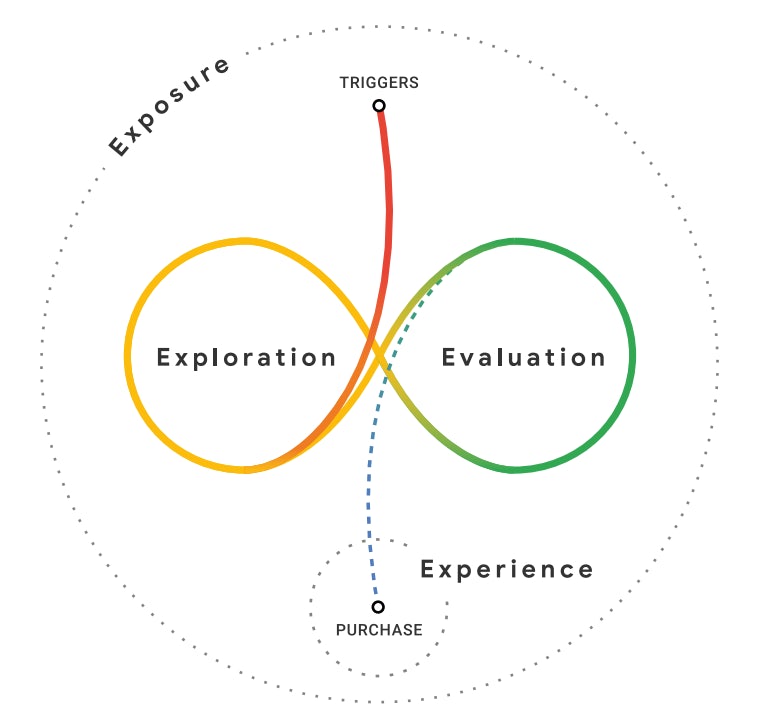Consumer purchase journeys are becoming increasingly more complex. The growing number of touchpoints and decline in brand loyalty are making it even more important to understand the contribution of your different digital marketing activities.
The conversation around Paid Search activity is shifting away from being purely conversion-driving, and with this shift, micro-conversion data can play a greater role in not only demonstrating the value of search activity to key stakeholders but also in helping drive stronger performance.
- What are micro and macro-conversions?
- How have micro-conversions been used historically?
- How to make the most of your micro conversion data
- Why this data has recently increased in importance
- When should micro-conversions be added as primary conversion actions?
- Micro-conversions and measurement
- Micro-conversions, intent and digital experience
What are micro and macro-conversions?
Micro-conversions are smaller actions that a user can take on-site, for example:
- Adding an item to their basket
- Visiting a specific page
- Downloading a brochure
- Beginning the checkout flow
Macro-conversions are conversions that are the primary goals of a business, for example:
- Completing the purchase of a product
- Completing a Contact Us enquiry form
Micro-conversions usually indicate a high probability of a macro-conversion in the future and therefore provide valuable information about potential customers.
How have micro-conversions been used historically?
Micro-conversions are often added to search accounts as secondary conversion actions. This means that they are set up in the account for observation purposes only; they are visible when looking at all conversions when reporting, but they are not directly used for campaign or bidding optimisations.
While having visibility on micro-conversions provides interesting insights into how customers act on-site, it raises the question – how can we use this information within the account to improve performance?
How to make the most of your micro conversion data
Micro-conversions can be added as primary conversion actions to PPC campaigns to fuel the bid strategy with valuable data on high-intent users. By adding these conversion actions as primary actions we’re allowing the bid strategy to use this data for campaign optimisation. By feeding the algorithms with this data we’re effectively helping it learn quicker and act smarter, so not only would this increase the number of these valuable site actions, but it will also increase your top-line conversions as the algorithm has a better understanding of the characteristics of a high-intent user and when to upweight bids.
For example, Client A wants to drive more engaged traffic but doesn’t know how to gauge what ‘engaged’ looks like.
Firstly we’d set up micro conversions for add-to-cart to track this on-site action. We’d then carry out a test using Google Ads experiments to A/B test this new add-to-cart conversion action as a primary conversion goal vs. the original, macro conversion setup. To measure success we’d determine if we see an uplift in engaged traffic and overall sales, usually throughout six weeks, depending on the volume of conversion data within the account, until the results are statistically significant.
Why this data has recently increased in importance
We’ve seen near full adoption of bid strategies across search, and when we consider how bid strategies work it demonstrates the importance of not neglecting key micro-conversions. Automated bid strategies use artificial intelligence to optimise conversions within every auction, more commonly known as auction-time bidding. It factors in a huge range of signals to determine the amount to bid to show an ad for a specific user, such as device, location, time of day, language, and operating system, to effectively determine how likely a user is to convert. Ultimately, the more data and better quality data we’re able to feed the algorithm, the better it will be able to perform.

When should micro-conversions be added as primary conversion actions?
Micro-conversions will work most effectively when applied as primary conversions to your consideration and higher-funnel conversion driving campaigns, such as generic search, dynamic search ads, and demand gen. The reach of these campaign types is far broader than you would get for branded search activity, intent tends to be lower, and naturally, the path to conversion becomes more complex. As a result, the importance of these conversion actions is heightened, as, unlike branded search, the bidding algorithm will have less of this historic conversion data to help develop its understanding of your customers’ behaviour.
When the product or service you’re offering has a long conversion window, the significance of these micro-conversions is also higher. Generally speaking, users will have more touch points and will take longer to convert when they are making a high-value purchase, for example, booking a holiday or buying a car. We can capture users while they are in the research phase of their purchase. While it may be unlikely that they go on to purchase through this initial campaign, it’s valuable to have a presence here and record the actions that were taken on-site. This has never been more important given the context of lowered brand loyalty and the cost of living crisis, with customers making more considered buying decisions which includes shopping around for quality and value.

Micro-conversions and measurement
As Paid Search activity products shift in focus to more creative and audience-based targeting, we need to adapt our thinking around measurement for this activity. On top of this, the journey to conversion is far from linear and we increasingly see a large number of digital touchpoints before a customer converts. A small proportion of users will complete a macro conversion when first visiting a site, but they will discover and engage with a range of pages and content on your site and these actions provide a wealth of information about potential customers.
By assigning a value to these key micro-conversions, the bid strategy will gain an understanding of the value of each action and will factor this weighting into its optimisations. Reporting on these consideration metrics will demonstrate the value of running prospecting activity within search, and users can be retargeted further down the funnel where they are more likely to go on to complete the purchase. Additionally, A/B testing on one vs. multiple primary conversion actions can be taken to further demonstrate the added value of feeding the algorithm with more data. At a broader level, this growth will be reflected in wider business data which can be evaluated within the constraints of a controlled test.
Micro-conversions, intent and digital experience
When people interact with a website, they give off little signals about what they are trying to achieve based on how they behave whilst they are on the website. We can use micro conversion data points and other interaction data to understand users’ intent, from starting out their journey right the way through to about-to-purchase and returning customers.
An example of this is if a person lands on a page, adds a product or several to the basket and then visits the basket page. If the user clicks on the delivery information, this event would suggest a much higher level of purchase intent than someone favouriting several items in a listing page or landing and immediately leaving.
We can segment customers based on their interactions and intent level and use this to retarget them and begin to dynamically change the digital experience of the website to encourage more people to convert.
Online experimentation can use softer metrics like add-to-basket and interaction with search as metrics in website A/B testing provided that we consider the larger metrics and why we are running the experiment.




